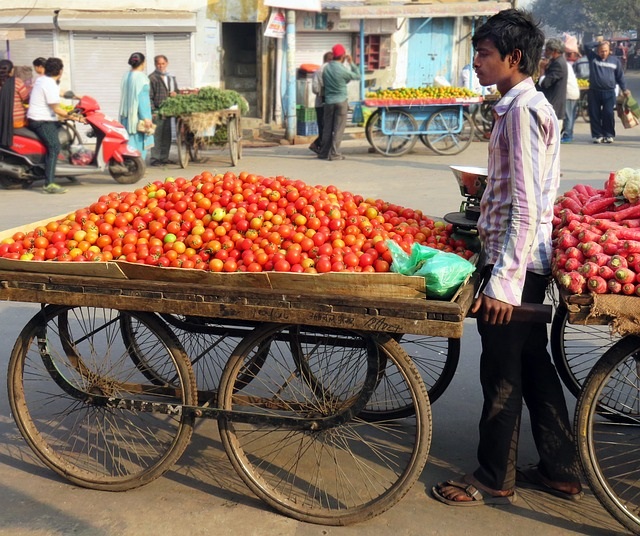Impact of Climate Change on Food Prices
Written by Madhav Bahl, a grade 11 student.
Why did Tomato prices rise in parts of India?
Written by Madhav Bahl, a grade 11 student.
This article is part of a series on climate change and its impact on India and the world
Tomato prices have been rising to unseen levels in India. Question is – why are tomatoes so expensive now? This article explains it.
In the previous article we saw how Western Disturbances led to floods in Northern India. But this phenomenon is not only causing floods but is also a reason for rising food prices like that of tomatoes.
Why are tomato prices rising in India?
- Oversupply in 2022 – led to farmers switching to other crops
- Heat Waves
- Unseasonal Rain
Tomatoes are staple in cooking throughout the world as well as in India. India consumes almost 19 metric tonnes of tomatoes yearly.
Now because it is in such high demand, tomatoes have high price volatility (going up and down) depending on the amount of supply. This is normal generally, but recently tomato prices have spiked to levels that are unheard of.
In detail – why did Tomato prices rise

Rewind to last year…
First there was oversupply – In December 2022, tomatoes were being sold by farmers for 50 paisa per kilogram due to them ripening faster than expected as there was a change in the weather cycle, which was again due to global warming.
Too much supply – This led to all the tomatoes in the belt ripening at the same time, which led to surplus (more than needed) supply. And since tomatoes rot easily, many farmers were not able to sell in time and faced losses.
Lack of storage – Another issue that was brought to light was the lack of storage space for tomatoes, which led to them selling for cheaper prices with fears of tomatoes rotting.
Farmers switched to growing other things – Due to these losses, many farmers switched to growing wheat or gram.
In 2023….
Heat waves – There were heatwaves in many parts of the country where tomatoes grow – this led to the drying up of the crop. Also, these early heatwaves (that originated owing to lack of Western Disturbances) led to ideal conditions for pests to flourish. These pests attacked and destroyed many tomato crops in April-May.
Unseasonal rain in May damaged produce in many states like Rajasthan, Uttar Pradesh and Haryana. Moreover, heavy rainfall in Karnataka also impacted the crops. This led to a decreased supply. Also, there was flooding due to heavy rainfall during harvest time which spoilt the tomatoes. Heavy rainfall also disrupted the transport chains, making tomatoes rot on the way. The price of tomatoes increased exponentially from Rs 2.50- Rs-5 in May to 0ver 170 Rs in Delhi at the end of June.
Also, farmers who had faced losses last winter due to oversupply did not have the funds (money) for pest control, and as the production costs kept increasing many farmers abandoned their crops.
Fall in supply – These factors led to a fall in supply of tomatoes, while the demand of tomatoes remained the same.
All of these factors played a vital role in increasing the price of tomatoes.
This problem will most likely continue till there is a good harvest from the Kharif crops and everyone in India will be praying for nothing to disrupt this year’s tomato cycle.
This article is part of a series on climate change and its impact on India and the world. If you wish to write for I Kid You Not as well, you can submit an article or an idea here

Better Your Child’s G.K. In 3 Minutes – Get This Free Newsletter
Get fun facts, simple and easy news, quizzes, and lots of other interesting things to read in your mailbox – for free! It’s what we call GK-on-the-go!



Comments